Chemistry teachers have faced extraordinary challenges in preparing and running practicals in the past 18 months. Clare Sansom investigates how they have fared
If you think back to chemistry lessons at school, what do you remember most clearly? It will very often be practicals, experiments or demonstrations. My own favourite chemistry lesson was the first that I can remember: the famous demonstration of the reaction of alkali metals with water, and thence the Group 1 reactivity series. Even in the 1970s, no-one was mad enough to let a class of 11-year-olds loose with such reagents. It was demonstrated by the teacher –although not, as far as I can remember, from behind a plastic screen – and the resulting explosions and brightly coloured flames were a delight. This demo is still done in classrooms today, and if pupils want to know what happens to rubidium and caesium at the bottom of the periodic table, YouTube offers plenty of videos.
The same excitement was felt by Rachel Willie, now head of chemistry at Sheffield High School. ‘I was hooked in year 7 when we did a test for chlorine and had to find the answer ourselves. This taste of investigation made me a scientist.’ But not all chemistry teachers were as hooked on practicals at school. ‘I enjoy practical chemistry more as a teacher than I did as a pupil, now that I understand the theory completely,’ says Nina Bull, who started teaching chemistry at Comberton Village College in Cambridgeshire in 2019.
There is still a ‘wow’ factor in practical chemistry. Many secondary chemistry teachers report that their younger pupils, in particular, look forward to practical lessons enthusiastically, and suggest that chemistry without the practical element would be a rather dry, factual subject. And experiments, even when demonstrated, have a very useful pedagogical function. Many chemistry students will agree with this comment from a current year 9 student (13–14 years old): ‘[This distillation] was a teacher demo, but it was more interesting and easier to understand after we had seen it done.’
I enjoy practical chemistry more as a teacher than I did as a pupil
Since the 1960s, practical science and technology teaching in England and Wales has been supported by Cleapss, a membership-led advisory service for schools and colleges (including primary schools). Initially, it produced guides that were posted to member schools; the guides are now made available online for member organisations, but the video demonstrations on its associated YouTube channel are free to all. They also provide a helpline, which their members see as vitally important.
Quality over quantity
Matt Endean, deputy director of Cleapss, has not noticed any significant drop in the quality of practical chemistry on offer in UK schools in the last 20 years, although there has been an overall drop in the amount of time devoted to practical science. ‘All schools, other than the top private schools, have had funding problems, but as far as I can remember they have all managed to fund the required practical sessions,’ he says. Stronger health and safety regulations have not dampened the interest in or enthusiasm for practical science in general or in chemistry in particular, although an increase in the number of ‘prescribed practicals’ in GCSE and A-level courses has somewhat reduced opportunities for innovation.
Technicians are woefully underpaid compared to teachers
Endean does, however, note one crucial problem that has worsened in recent years: the availability of school chemistry technicians. Technician hours have been cut in many schools, and there is now something of a crisis in technician recruitment. This problem would have an easy answer if only governments and governors were prepared to take it. ‘If you look at the salaries that schools offer to technicians, you will not be surprised to learn that few chemistry graduates, let alone postgraduates, apply for these posts,’ he says. ‘Technicians are woefully underpaid compared to teachers, often getting not much more than the minimum wage.’
Another problem with the preponderance of ‘prescribed practicals’, particularly at GCSE level, is that, even before the pandemic, pupils were often only given the opportunity to do each practical once. ‘Ideally, every practical needs to be done at least twice, so they learn how to handle the equipment the first time and can then concentrate on what the practical means,’ says Bull. Pupil feedback also suggests that they would like to repeat experiments.
Anyone who studied chemistry A-level in the 1970s or 80s will have memories – often nerve-wracking ones – of doing experiments under exam conditions. Practical assessments like this no longer happen in England, although they do in Wales and Northern Ireland. Instead, A-level students are required to undertake a series of set practical tasks during the two-year course, and they will be awarded a pass grade if they can carry them out competently. The written exams have been designed to test students’ understanding of practical work further. Although you can get an A* in chemistry without passing the practical section, many universities ask for a practical pass in their admissions requirements.
But English secondary schools seem to do rather better by their younger pupils, at least compared to some other European countries. Yair Doza recently taught International Baccalaureate science at a Cambridge school that takes many of its post-16 pupils from continental Europe and remembers that many of these pupils ‘had never so much as turned on a Bunsen burner’ at the start of their IB course.
Pandemic problems
But all that was 2019, and this is now. It goes without saying that the pandemic has changed everything, and in schools, practical science lessons have changed more than most others. In the UK, schools had to go into and out of home-schooling and adapt to more or less onerous distancing and hygiene measures with no more notice than the rest of society. ‘We were told we were closing on Wednesday, and the labs had to be shut up by the end of Friday’ says Sally Harding, head of chemistry at Comberton. And not only were the labs shut, but some of the equipment vanished: Comberton and Oxford High School are among many across the country that sent sets of goggles, lab coats and other protective kit to local hospitals at the start of the pandemic.
In the first lockdown we chose to study chemistry of the atmosphere, as it didn’t have many practicals
Staff at Cleapss had no more notice of the first lockdown than those in schools, but they worked very hard to produce two new sets of guides: one for experiments that can be done at home, and one with guidance for Covid-safe ways of running science labs in schools emerging out of lockdown. ‘We will keep these available for at least the next two academic years, as the pandemic ebbs and flows,’ says Endean. ‘When it ebbs, they will very likely move off our front page, but they will be there if required.’ The home-based experiments Cleapss provides are mainly based on those designed for primary schools, but many have been done and enjoyed by secondary school pupils.
It is easier to teach some chemistry topics than others without access to labs. ‘In the first lockdown we chose to study chemistry of the atmosphere with our year 10 pupils, as it didn’t have many practicals,’ says Harding. The Comberton teachers remember pupils who were studying materials science being asked to hunt for objects around the home that were made out of materials with specific properties, including polymers and composites. Home-based physics lessons saw pupils throwing objects out of bedroom windows to study gravity and boiling kettles to measure heat capacity.
Online solutions
And chemistry, like many other subjects, relied on videos – including, no doubt, those of alkali metals reacting with water – a great deal. One GCSE year student at a Cambridge comprehensive, studying chemistry as a separate science, explains that ‘we were given videos of experiments to watch and data from those experiments to plot graphs of, just as we were used to; they weren’t as interesting as live demos, but they were more interesting than worksheets, which are very repetitive.’ Emma Regardsoe, head of chemistry at Oxford High, agrees: ‘Videos are a poor substitute for doing experiments live.’
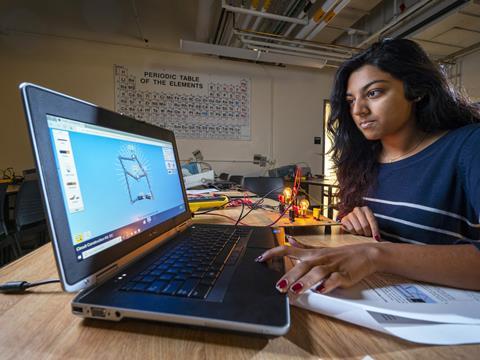
But there are some topics in chemistry that lend themselves particularly well to online experiments. The best molecule-scale simulations are far better able to help students build accurate mental models of molecular structure and dynamics than any physical demos are, and there are now plenty to choose from. The free PhET simulations from the University of Colorado in the US appear to be widely used in the UK. ‘We used PhET’s “Build a molecule” simulation in our year 8 unit on the periodic table, and its simulations were also popular with GCSE-year students coming into the lab for a sixth form taster day,’ says Harding. It goes without saying, however, that some schools found it much harder than others to make sure that all pupils had at least ‘good enough’ WiFi connectivity and access to the right devices during school closures.
Videos are a poor substitute for doing experiments live
School chemistry labs faced a different set of challenges when lockdowns eased and pupils returned to the classroom. Labs have been severely restricted by the need for social distancing, with pupils required to face the front and any physical interactions between pupils and teachers either forbidden or greatly restricted. ‘It has been difficult to set any experiment in which a teacher might need to intervene physically if students get it wrong,’ says Willie. ‘Very soon after a return to in-class teaching, we lost a member of staff because they went to support a pupil having difficulty with a practical procedure and when the pupil received a positive test the next day, they were forced to self-isolate’. Students also have had to work alone or in smaller groups, which is more expensive as more reagents (and more technicians’ time) are needed. And, finally, the need to quarantine equipment for a set time between each ‘bubble’ of students has further limited the number of practical hours available.
It is not surprising, therefore, that many schools have prioritised practicals for the older pupils, and particularly those facing exams that year. The youngest secondary pupils, the 11–13-year-olds in years 7 and 8, have undoubtedly suffered the most disruption. Some schools have been unable to timetable lab time at all for these children, who are at an impressionable age and often love doing experiments. We will know in a few years’ time whether their interest in chemistry wanes more than a typical year’s intake does. In contrast, Regardsoe took a group of year 12 students off the timetable completely and into a lab for two intense days so they could do all the prescribed practicals that they had missed.
As ever, socioeconomic issues will also have had an effect. Schools and students in less-advantaged areas will have suffered from disruptions more than their better-equipped counterparts. And with last year’s Chemistry For All report, we know that disadvantaged students, with less ‘science capital’ in their families, are already less likely to continue studying chemistry.
The teacher pipeline
The pandemic has also been particularly hard on the least experienced staff. Lockdown hit when Bull was half-way through her first teaching year, which she describes with understatement as ‘interesting’. ‘I am well aware how much practical experience I have missed, and this has dented my confidence, but I know that I have been lucky in the help I have received from my experienced colleagues, particularly Sally [Harding],’ she says. Not every young teacher will have had such support available, and this year’s new teachers will also have lost much of the scheduled lab time in their teaching practice.
The IT expertise that I gained during lockdown will be invaluable throughout my career
The depth of this problem was revealed in a Royal Society of Chemistry survey that heard from over 8% of all new and trainee chemistry teachers in the UK. Not surprisingly, a large majority reported that they lacked both practice and confidence in teaching experimental work. ‘We believe that funding focused on practical skills development, given either directly to schools or to training providers, is essential to bridge this gap. So, we’re calling on governments to plug it with extra funding to address these immediate CPD needs,’ says Michelle Palmer, an education policy specialist at the RSC. But there have been some silver linings. ‘The IT expertise that I unexpectedly gained during lockdown will be invaluable throughout my career,’ says Bull. More experienced teachers have also learned new IT skills, and Harding, at Comberton, intends to run video feeds of demos while they are in progress ‘so the kids at the back can see better’.
Once we emerge from the pandemic, how will practical chemistry adapt: which changes will stay, and which will go? Quarantining kit is bound to be on the second list, but many teachers hope that improvements in hygiene will stay. The biggest worry is whether pupils who have lost out will get their confidence in practical work back. ‘Since being back in school we have worked incredibly hard to provide as many practical opportunities as possible to enable our girls to restore their confidence,’ says Mary McGovern, head of chemistry at Wimbledon High School.
Hopefully, the country will emerge with an enhanced appreciation of how much we need chemists, to develop drugs and vaccines to counter Covid and tackle the next pandemic before it spreads. But will the subject attract the talented young people that it deserves? A key part of any chemistry education is practical work, either done by the student or demonstrated engagingly by a teacher, so investing more resources in them is key, as the RSC is calling on the government to do. And another crucial yet often overlooked factor are the beleaguered school chemistry technicians: they need more pay, and greater respect for their enthusiasm, dedication and professionalism.
Clare Sansom is a science writer based in Cambridge, UK
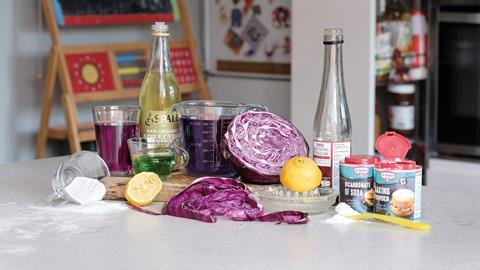
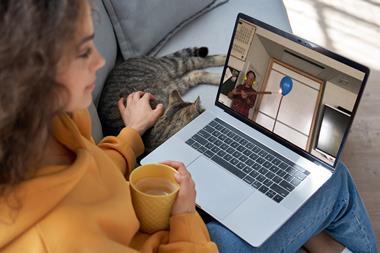
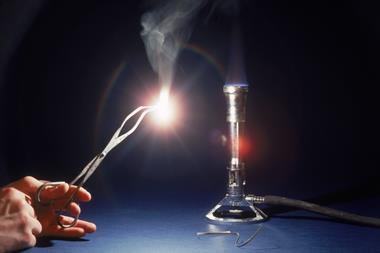
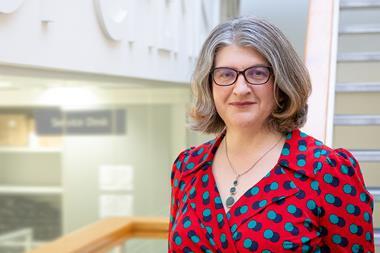









No comments yet